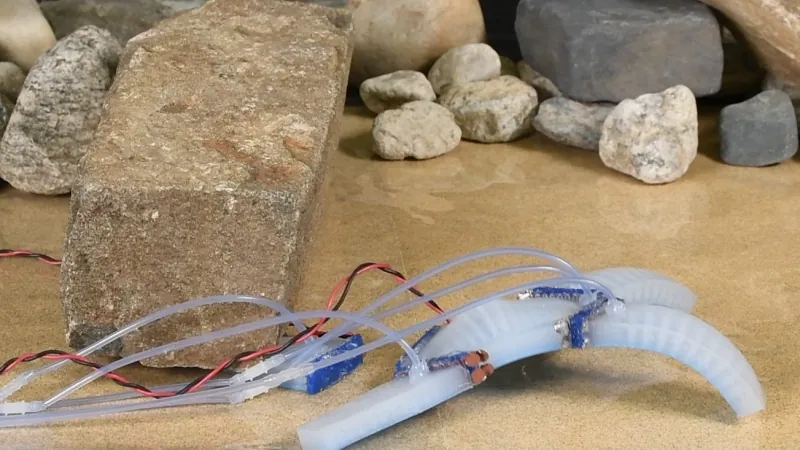
This Revolutionary Robot Can Amputate Its Own Limbs to Survive!
2024-10-15
Author: Emily
Introduction
In an astonishing breakthrough at Yale University’s laboratory in Connecticut, researchers have designed a remarkable palm-sized silicone robot that showcases an extraordinary survival mechanism: it can amputate its own limbs when trapped, a feature inspired by the biological adaptability of creatures like geckos. As it attempts to navigate its environment, a brick unexpectedly crashes onto one of its legs, immobilizing it momentarily. In a few seconds, the robot contorts its body, managing to escape while leaving behind its helpless leg.
Innovative Joint System
This innovative robot operates thanks to a unique joint system. At room temperature, the substance binding the joints is rubbery, but when heated, it transforms into a more liquid-like state, allowing the limb to detach easily. This capability is revolutionary not only for survival but also for enabling robots to adapt to their surroundings by changing their structure.
Combining Robotic Modules
Yale's research team, led by graduate researcher Bilige Yang, emphasized the potential of combining different robotic modules. By fusing multiple units together, these robots can tackle complex challenges that one unit alone cannot handle. The team’s findings were published in the prestigious journal Advanced Materials in late May.
Advantages of Soft Robotics
While many traditional robots are built from hard materials such as metals and plastics, soft robots are gaining traction due to their pliability, which allows for greater maneuverability in tight and complex environments. From strawberry-picking machines to biomedical devices that navigate the human intestine, the applications for soft robotics are expanding.
Expert Opinions
Tan from the National University of Singapore, who specializes in soft materials and robotics, calls Yale's robot a groundbreaking example of a self-amputating and reconfigurable design. 'This kind of innovation is likely to influence diverse fields significantly,' she stated. She also expressed interest in applying similar joint mechanics to biodegradable robots, minimizing environmental impacts when an appendage is discarded.
Potential Applications
This adaptability opens numerous possibilities. For instance, during search and rescue operations in disaster-stricken areas, a robot could leave a limb behind to escape entrapment, continuing its mission to find survivors amidst rubble. Yang imagines scenarios where a soft robot finds itself ensnared under debris in a hazardous environment but can still complete its task without losing overall functionality.
Future Prospects
Additionally, Yang and his colleagues are busy enhancing various soft robots within their Yale laboratory to function as modular parts that can adapt their shapes and capabilities based on immediate requirements. One exciting prospect involves a robotic turtle capable of transitioning seamlessly between land and water, with limbs that can morph from sturdy tortoise-like shapes to agile sea turtle features.
Conclusion
With ongoing research and collaborations, the future for soft robotics looks increasingly promising—these self-amputating innovations may soon change the landscape of robotic technology as we know it!









 Brasil (PT)
Brasil (PT)
 Canada (EN)
Canada (EN)
 Chile (ES)
Chile (ES)
 España (ES)
España (ES)
 France (FR)
France (FR)
 Hong Kong (EN)
Hong Kong (EN)
 Italia (IT)
Italia (IT)
 日本 (JA)
日本 (JA)
 Magyarország (HU)
Magyarország (HU)
 Norge (NO)
Norge (NO)
 Polska (PL)
Polska (PL)
 Schweiz (DE)
Schweiz (DE)
 Singapore (EN)
Singapore (EN)
 Sverige (SV)
Sverige (SV)
 Suomi (FI)
Suomi (FI)
 Türkiye (TR)
Türkiye (TR)